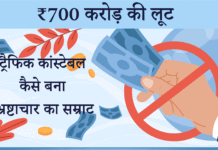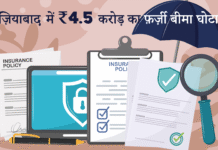India is a country known for its rich cultural diversity, historical heritage, and a complex social structure. One of the defining features of this social structure is the caste system, which has played a significant role in shaping the nation’s history and continues to influence its present. A caste census, a detailed enumeration of the population based on their caste identities, has been a topic of debate and discussion in India for many years. In this article, we will explore the reasons behind the demand for a caste census and its potential impact on Indian society.
Understanding the Caste System
The caste system in India is a hierarchical social stratification that categorizes people into various groups based on their birth, occupation, and social status. These caste identities have been deeply ingrained in the country’s social fabric for centuries, impacting everything from education and employment opportunities to social interactions and marriage choices.
The caste system was officially abolished in India with the adoption of the Constitution in 1950, which enshrined the principle of equality and prohibited discrimination on the basis of caste. However, the legacy of the caste system still persists, with millions of people facing social, economic, and educational disparities due to their caste background.
The Demand for a Caste Census
The call for a caste census in India is not new. It has been a contentious issue for decades, with various political parties and social organizations advocating for its implementation. Here are some key reasons behind the demand for a caste census:
- Data for Policy Formulation: Proponents argue that a caste census is necessary to gather accurate and comprehensive data on the socio-economic conditions of various caste groups. This data can then be used for evidence-based policy formulation and targeted welfare programs aimed at addressing the specific needs of marginalized communities.
- Social Justice: Advocates assert that a caste census can help in identifying and addressing discrimination and inequalities faced by certain caste groups. This information can be crucial in ensuring social justice and equal opportunities for all citizens, as mandated by the Indian Constitution.
- Representation: Some argue that a caste census can lead to better representation of underprivileged and historically marginalized communities in various government institutions, thereby increasing their political participation and influence.
- Transparency: A caste census can bring transparency to the allocation of resources and benefits under various affirmative action schemes, such as reservations in education and employment. This transparency can help prevent the misuse of these benefits.
- Data Accuracy: Critics of the existing data collection methods point out that the enumeration of caste groups based on last names is often inaccurate and incomplete. A caste census would provide more precise and reliable data.
Challenges and Concerns
While the idea of a caste census has its merits, it also faces several challenges and concerns:
- Privacy Issues: Collecting data on caste identities raises privacy concerns, as individuals may be hesitant to disclose their caste due to fear of discrimination or stigmatization.
- Political Controversy: The issue of caste is highly politically charged in India, and conducting a caste census could lead to further polarization and controversies.
- Resource Allocation: Critics argue that focusing on caste-based data may divert attention from other critical development indicators like income, education, and health.
- Census Logistics: Implementing a caste census on a massive scale in a country as vast and diverse as India poses logistical challenges, including cost and manpower requirements.
Bihar Caste Census Report (Bihar Jaati Adharit Ganana): Total Population 13 Crores
General Castes
| Rajput | 3.45% |
| Kayastha | 0.60% |
| Brahmin | 3.65% |
| Bhumihar | 2.87% |
Other Backward Classes (27.13%)
| Yadav | 14.26% |
| Khushwaha | 4.21% |
| Kurmi | 2.87% |
| Bania | 2.31% |
Extremely Backward Classes (36%)
| Kevart | 0.2% |
| Kevat | 0.71% |
| Mallah | 2.6% |
| Teli | 2.81% |
| Nai | 1.59% |
| Dhanuk | 2.13% |
| Gangota | 0.4% |
| Chanravanshi(Kahar) | 1.64% |
| Nonia | 1.91% |
| Prajapati (Kumhar) | 1.40% |
| Badhai | 1.45% |
| Bind | 0.98% |
Scheduled Castes (19.65%)
| Chamar/Mochi/Ravidas/Charmkar | 5.25% |
| Dusadh/Dhari/Darahi | 5.31% |
| Mushahar | 3.08% |
| Pasi | 0.98% |
| Mehtar | 0.19% |







